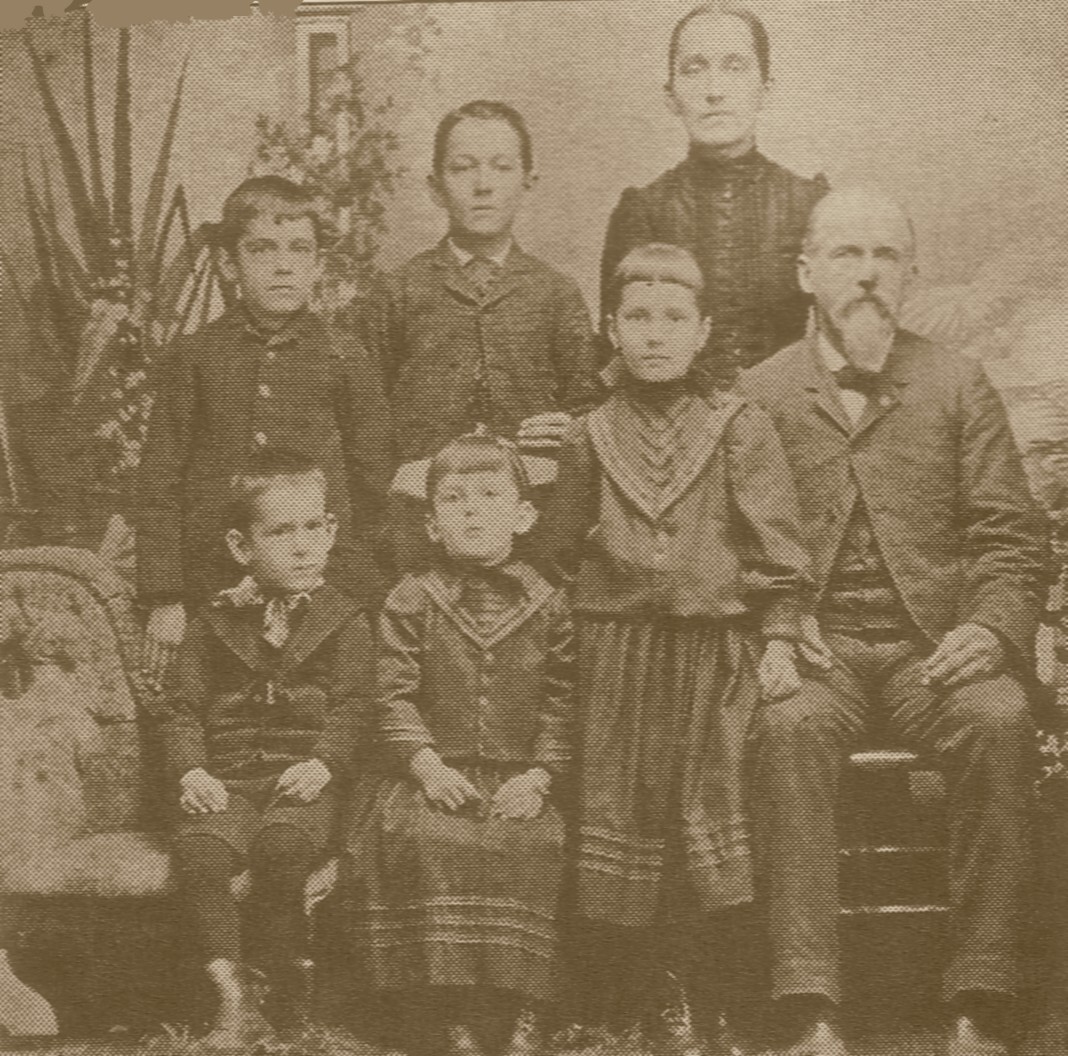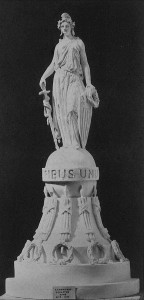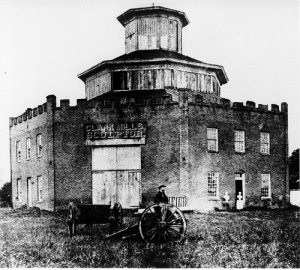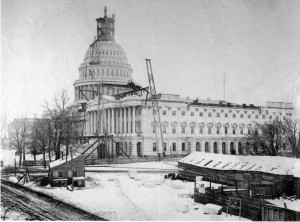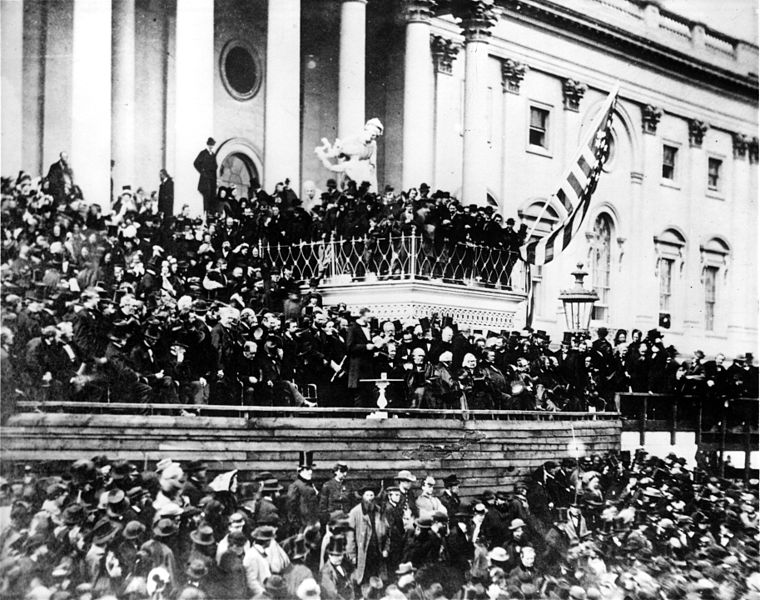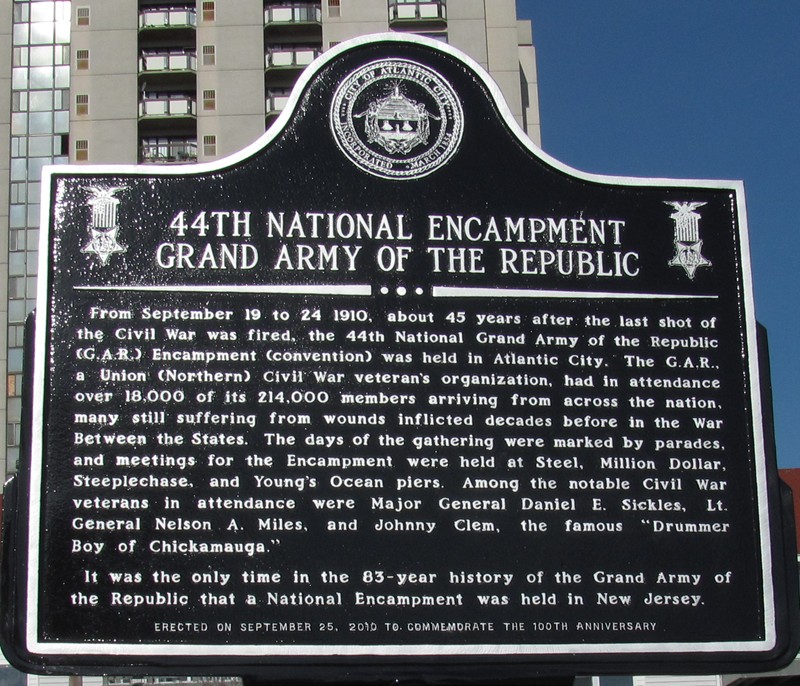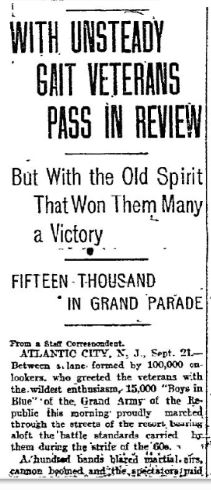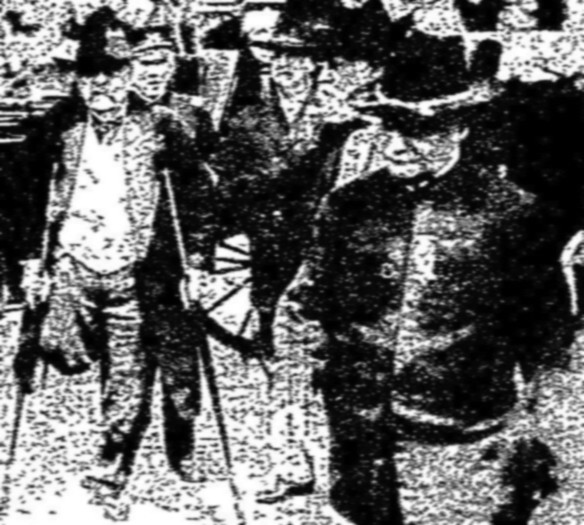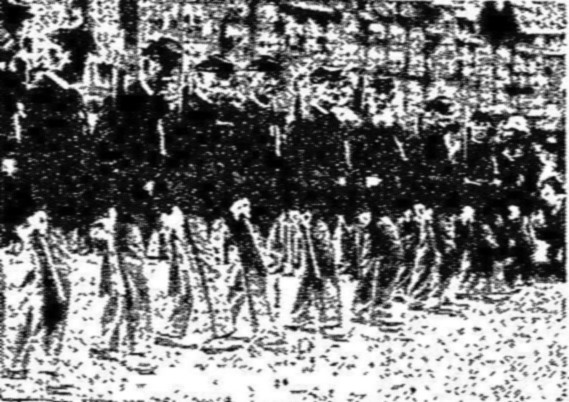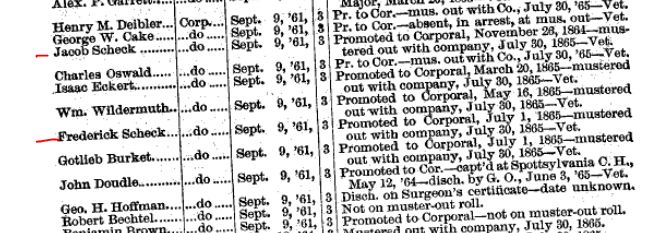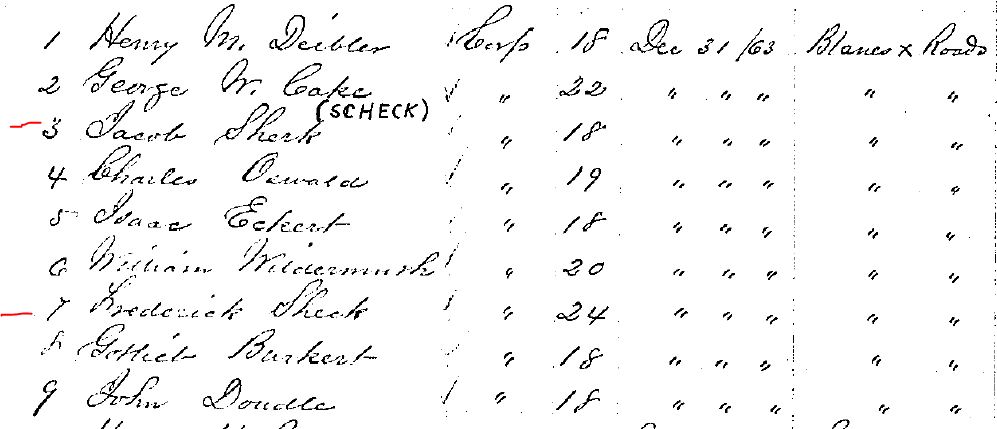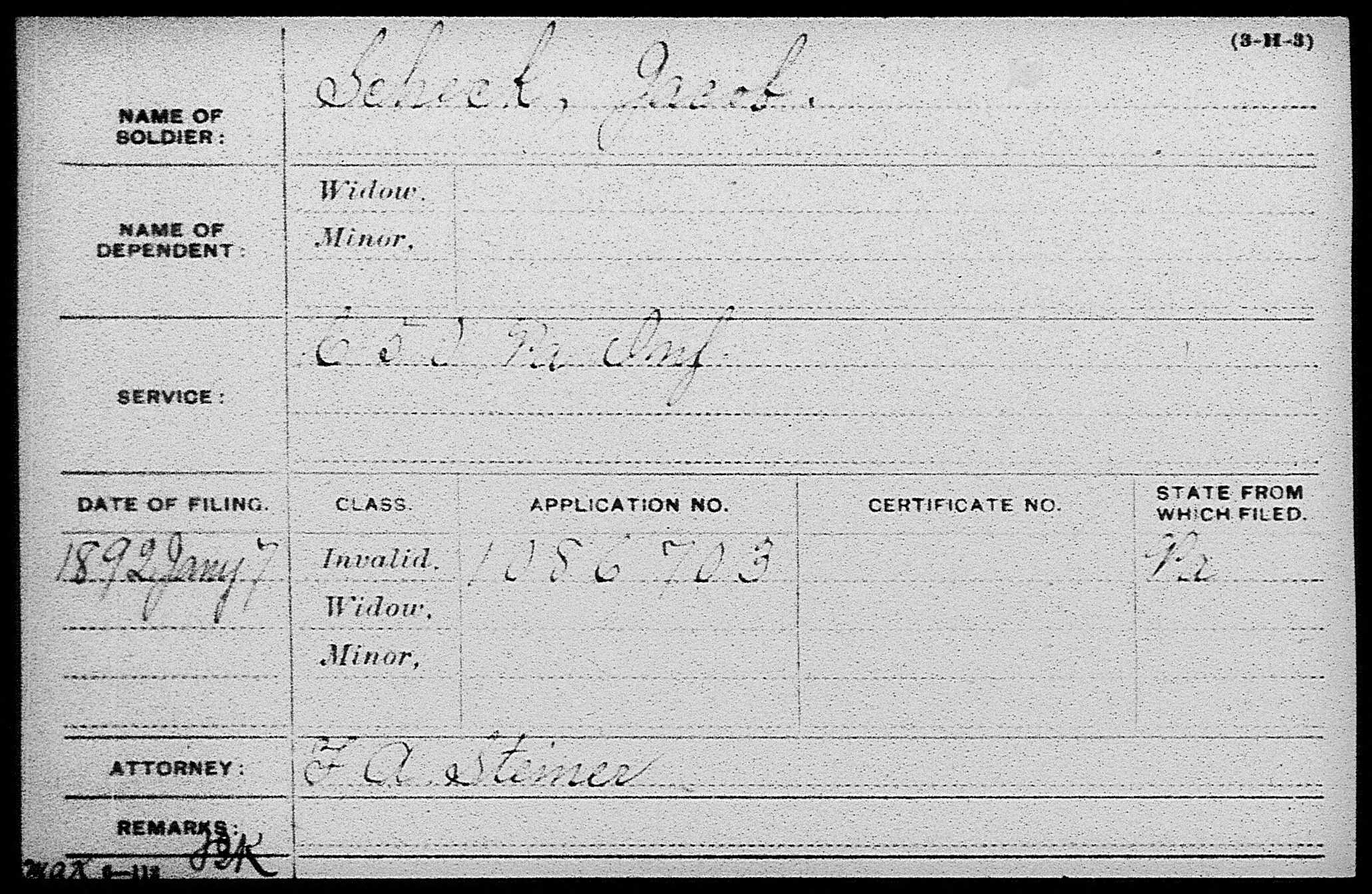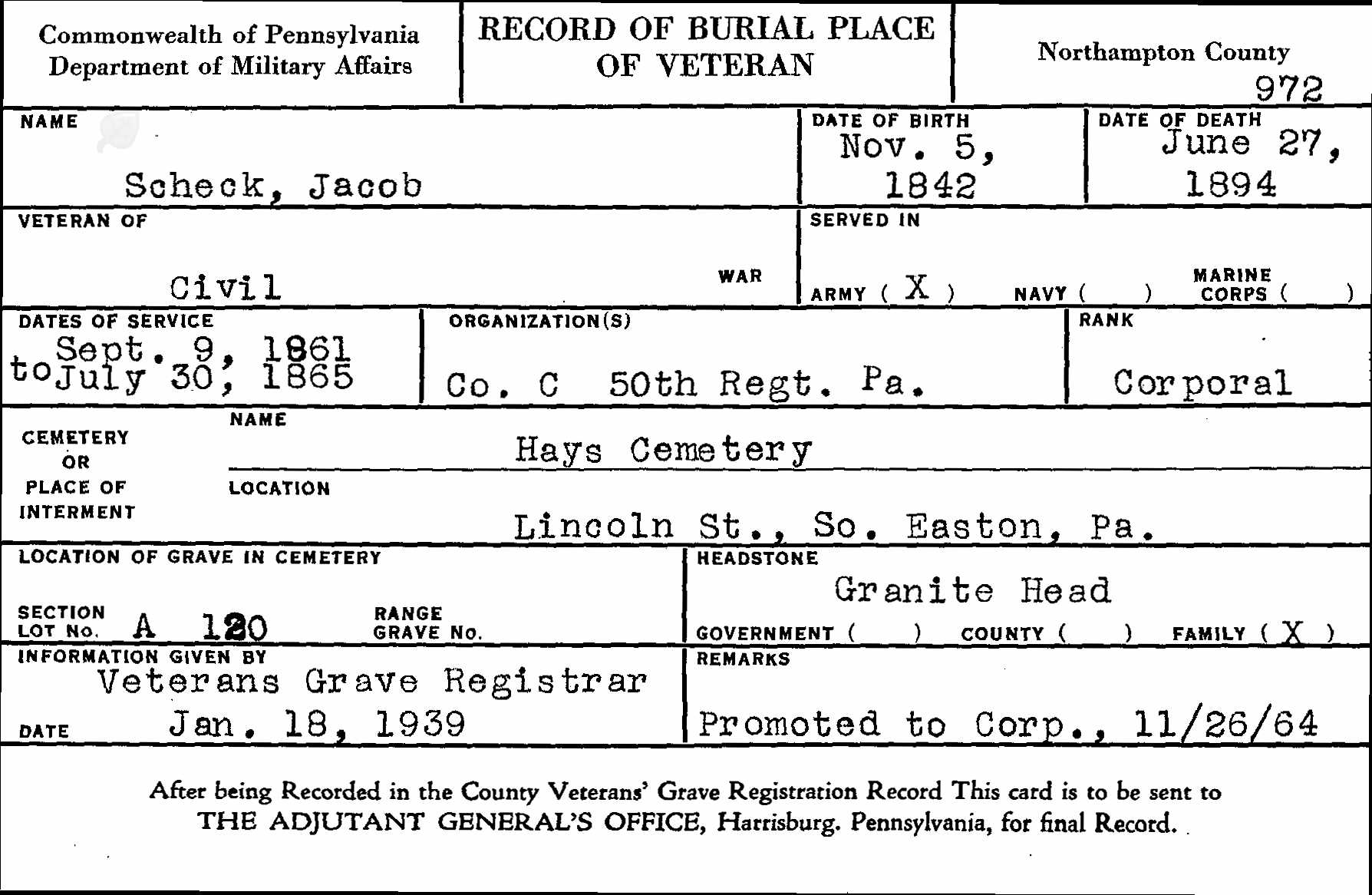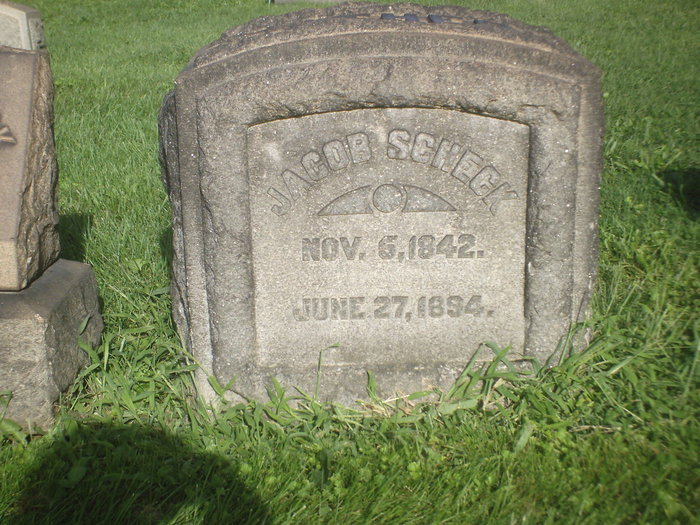Isaac Hepler – Carpenter and Merchant of Gratz
Posted By Norman Gasbarro on January 22, 2013
Isaac Hepler (1838-1918) was a Civil War veteran who, after the war, spent the remainder of his life in Gratz Borough, Dauphin County, Pennsylvania, where he ran a successful business.
The above family photo is of the Isaac Hepler family and was taken around 1890. Standing in back are sons Joseph Hepler and George Hepler and second wife Amanda [Harper] Hepler. Seated in front are Thomas Hepler and Hannah Hepler and standing next to her father Isaac is Lottie Hepler. An original of the photo is in the collection of the Gratz Historical Society. It has also been published in A Comprehensive History of the Town of Gratz Pennsylvania. The Hepler family genealogy appears in that book on pages 290 to 292.
The following sketch appeared in the Commemorative Biographical Encyclopedia of Dauphin County: published in 1896 by J. M. Runk and Company of Chambersburg, Pennsylvania [Note: click on book title for free book download].
Isaac Hepler, merchant, Gratz, Pennsylvania, was born in Eldred Township, Schulykill County, Pa., August 5, 1840. He is a son of George W. Hepler and Hannah [Graiter] Hepler. His grandfather, Christopher Hepler, was born and reared in Schuylkill county and was a farmer. He died in his native county about 1845. He married Catherine Wagner and they were the parents of a large family of sons and daughters.
George W. Hepler, father of Isaac Hepler, was born in Eldred Township, Schuylkill county, Pa., May 16, 1810. He died in his native township and was buried there. He married Hannah Graiter and their children are: Catherine Hepler, Mrs John Berger, residing near Williamsport, Lycoming County; Andrew K. Hepler, died in Schuylkill county in 1882 and is buried at Gratz, Pennsylvania; Polly Hepler, died young; Isaac Hepler; Hannah Hepler, Mrs. J.B. Fox, Sullivan County, Pennsylvania; Lizzie Hepler, Mrs. David Williert, Uniontown, Pennsylvania; George Hepler, laborer, Rocktown, Pennsylvania; and John Hepler, laborer, Ashland, Pennsylvania.
Isaac Hepler was not permitted to attend school very long as his help was needed on the farm as soon as he was strong enough to do farm work, and his father died when he was eight years old. The farm contained one hundred and thirteen acres, but it was heavily encumbered with debt, and Mrs. Hepler found it difficult to keep the family together. She died when Isaac was nineteen years of age. The farm was then sold, and after paying debts he found that his share was just $19. He went out from home and found work for one year with his uncle, John Haas.
In October 1862, he enlisted at Harrisburg in Company K, One Hundred and Seventy-second Regiment, Pennsylvania Volunteers [172nd Pennsylvania Infantry], for nine months. During six months of the time the company did artillery duty. They were first ordered to Washington, D.C., thence to Newport News, thence after a week’s stay to Yorktown, Va., which place they left July 2, 1863, for Gettysburg, Pa. On the way to Gettysburg, Mr. Hepler was taken sick on board the boat and was ordered to the hospital. He refused to go and recovered his health on the march. The regiment did not reach Gettysburg in time to take part in the battle. Mr. Hepler was ordered to Williamsport, Pennsylvania, thence to Warrenton Junction, where he was discharged, his term of service having expired, and came home.
He then worked eight months for his uncle, John W. Hepler, after which he was employed on the public works at Girardville and Goss Creek. His next employment was as carpenter in the mines, building breakers. He had never served any apprenticeship at carpentry, but had natural aptitude for using tools. He bought him a set of rough implements and went to work, earning the regular wages of $2.25 to $3 per day, and none knew or discovered that he was not an instructed carpenter. While building one breaker it became necessary to attach the block and tackle to a point fifty feet from the ground. All the other workmen refused to attempt the difficult and hazardous undertaking, but Mr. Hepler safely accomplished the feat, and was rewarded by an advance in his wages from $2.50 to $3 per day.
In 1866 Mr. Hepler, with his brother Andrew Hepler as partner, opened a store and hotel, his brother attending to the business at home while he went out on the road as huckster. After five years in the business Mr. Isaac Hepler sold his interest, and in 1871, his brother again being his partner, bought property and a hotel at Gratz, Pennsylvania. Building a store room adjoining the hotel, they put in a general stock of merchandise. After five years the partnership was dissolved, Isaac Hepler taking the store and Andrew Hepler the hotel. Mr. Hepler has continued the mercantile business alone since 1876, and also owns and manages a farm of fifty-five acres.
Isaac Hepler has been twice married. First, 19 August 1865, to Miss Matilda Knarr, who died August 15, 1869, leaving one child, Lewis F. Hepler, who was killed on the railroad 17 March 1891, at the age of twenty-three. His second marriage, 25 November 1875, was with Amanda Harper, daughter of Joseph Harper, deceased. Their children are: George Edgar Hepler, Joseph Harper Hepler, Lottie Florence Hepler, Thomas R. Hepler, Hannah M. Hepler, Robert Roy Hepler, and Annie Hepler, all at home.
Mr. Hepler is a Democrat, but is very liberal in his views and has never sought office. He is a member of the Lutheran Church. He sustains a reputation for the most unswerving rectitude, and enjoys the highest esteem of his neighbors.
While the family name of Isaac’s mother is recorded as “Graiter” in the biographical encyclopedia article (above), it more correctly was “Kratzer.” Isaac’s name is very often found in the records as Isaac Kratzer Hepler or Isaac K. Hepler.
In 1904, Isaac Hepler installed new lighting in his store as reported on 9 January by the Patriot:
Isaac Hepler and Israel Daniel, are this week, greatly improving their respective places of business by substituting new acetylene gas lights for the old oil lamps.
In 1905, Mrs. Amanda [Harper] Hepler‘s cousin died and she attended the funeral in Sunbury, as reported by the Patriot on 25 April:
Captain Thomas William Hoffman, cousin of Mrs. Hepler, was born near Berrysburg, Dauphin County, in 1839. His mother was a member of the Harper family and his father, Amos A. Hoffman was a direct descendant of Johann Peter Hoffman (1709-1798). Thomas William Hoffman was the recipient of the Medal of Honor for gallantry at the Siege of Petersburg.
For additional information on Isaac Hepler, see the following prior blog posts:
Gratz During the Civil War – George Moyer House
Gratz During the Civil War – George Ossman, Boot and Shoe Maker
Gratz During the Civil War – Zacharias Laudenslager House
—————————–
News clippings are from the on-line resources of the Free Library of Philadelphia.
 ;
;
